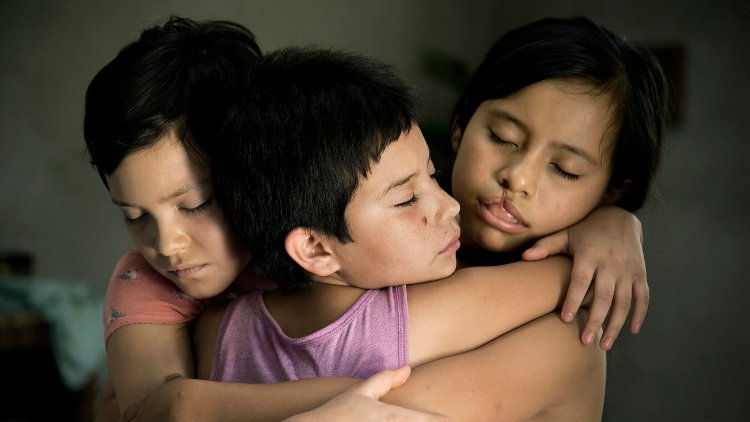Noche de Fuego (dir. Tatiana Huezo), 2021
- Samuel Haines

- Nov 22, 2021
- 3 min read
Updated: Dec 8, 2021

Rita digs a shallow grave and asks her eight year-old daughter, Ana, to lay within the hollow, rectangular pit. The grave at first seems like a game, but in fact, we later learn the grave is there to protect Ana from encroaching danger. The small, isolated mountainous town Rita and Ana live in is home to several single mothers tending to children. A poppy field along the mountainsides provides work and cellular service to the community, while a nearby quarry offers limited job alternatives. There is a foundational and looming darkness to Noche de Fuego, the Mexican International Film entry to the upcoming Academy Awards. Ana, and her close friends, Paula and Maria live in a war zone: military trucks roam the main street, dark SUVs speed through the countryside, and the government uses a single helicopter to spray poison over the poppy fields. This war zone, however, is akin to peripheral vision. The imminent danger around these young girls is rarely seen, just a blur in the corners of their eyes pushed to the periphery by the perspective of enduring youth.
Noche de Fuego is successful on many fronts, but perhaps most impactful in the portrayal of such persevering youth. Despite looming dangers, we follow Ana, Paula, and Maria during formative years of their childhood. The brewing war is only seen in the actions their mothers take to protect them: cutting their hair so they pass as boys, forbidding makeup, and carefully watching when the dreaded sounds of SUV cartel caravans tear through the local roads. Teachers rotate through the community, often leaving due to the threat of violence. When one teacher implores the local mothers for information regarding a young girl, swept away into the roaming SUVs, Rita and the other women remain silent in fear. These subtle, but impactful, moments serve as constant reminders of the danger these women and young girls are subject to within their livelihood. However, these moments do not overwhelm the film at all. As mentioned, the perseverance of youth, despite all odds and dangers, is a beautifully commanding presence. Ana, Paula, and Maria navigate a universal youth largely familiar to any viewers: school assignments and public speaking anxiety, crushes on teachers and older brothers of friends, community dances, and even, for Maria, medical procedures to correct a cleft-palate. More so than any individual action, the inside jokes, laughter, and secrets shared among the friends is an authentic and endearing display.
The innocent and normalcy writer-director Tatiana Huezo instills amongst the outer violence is an impressive display. Every so often, you watch a film so artfully crafted that the strength of a good director is evident. Noche de Fuego is one of these instances and, in many ways, feels connected to similarly dark, yet realistically brilliant, female-written and directed films like Peru’s Cancion sin Nombre and Bosnia and Herzegovina’s Quo Vadis, Aida which also chronicle the plight of mother’s during wartime and government corruption. For Noche de Fuego, each choice, scene, and dialogue feels purposeful in bonding an audience to these girls and their mothers while reminding us that the happiness and joys of youth can be so quickly swept away in violence. The childhood perspective of wartime is enlightening and oddly beautiful in the overwhelming refusal to lose the experience of youth to violence. And, while the final scene devastatingly shatters the safety and protection these girls were afforded by their mothers, the film refrains from descent into the typical and the expected. And, much like those in the film, we the audience feel grateful for the lightheartedness of the aforementioned youthful perspective for as long as the inevitable danger was able to be withstood.
Rating: 9.25/10





Comments